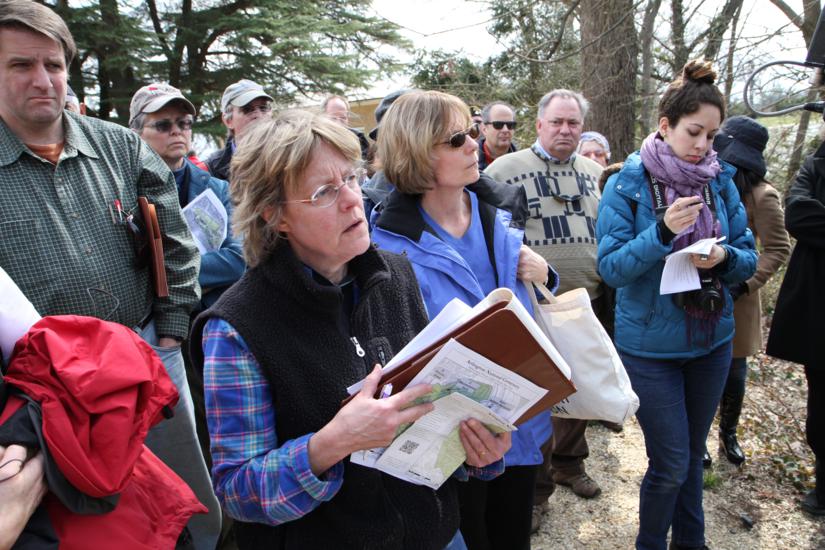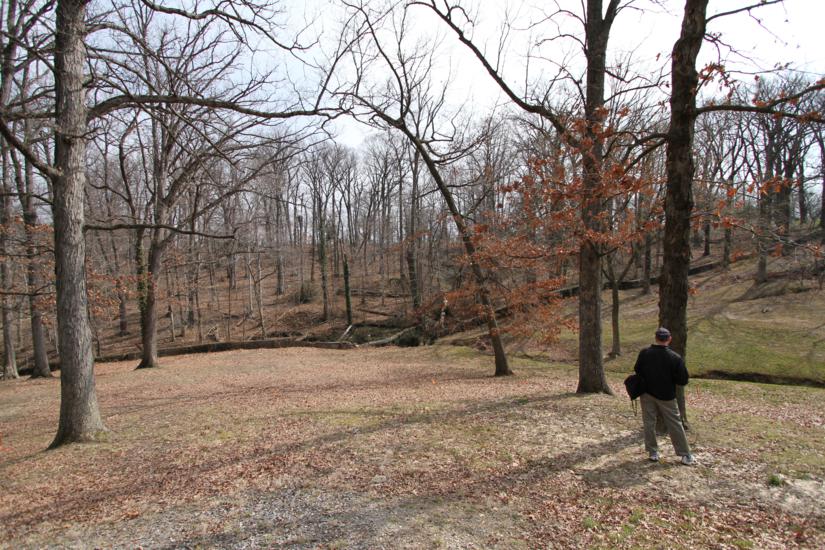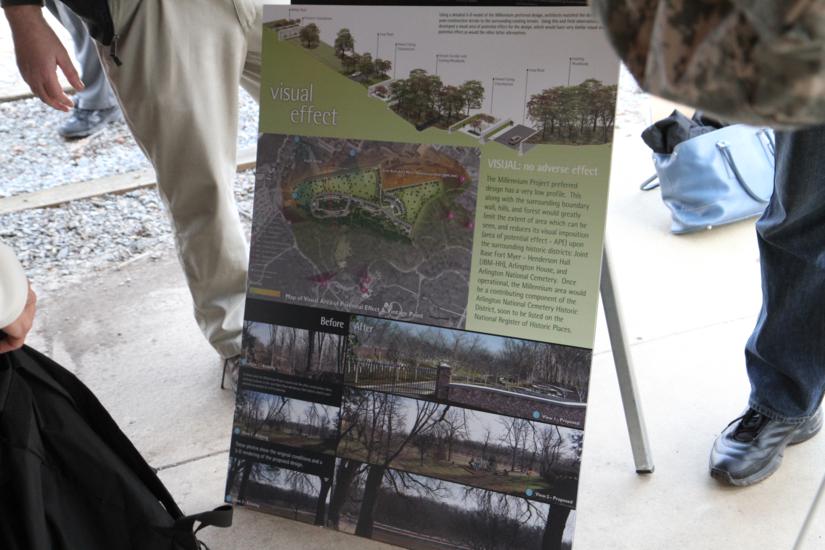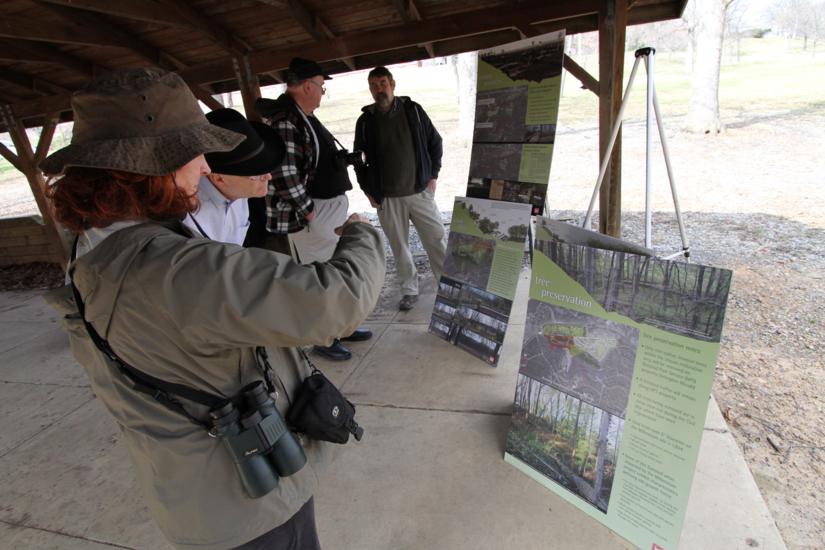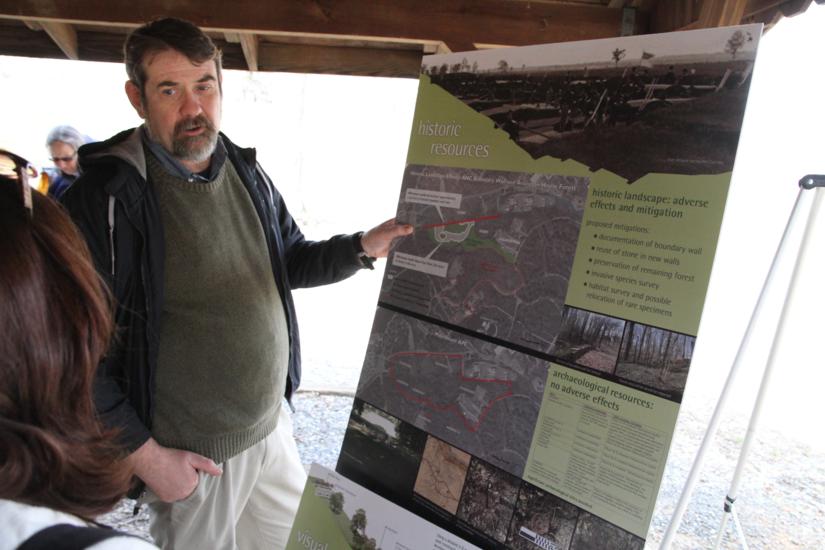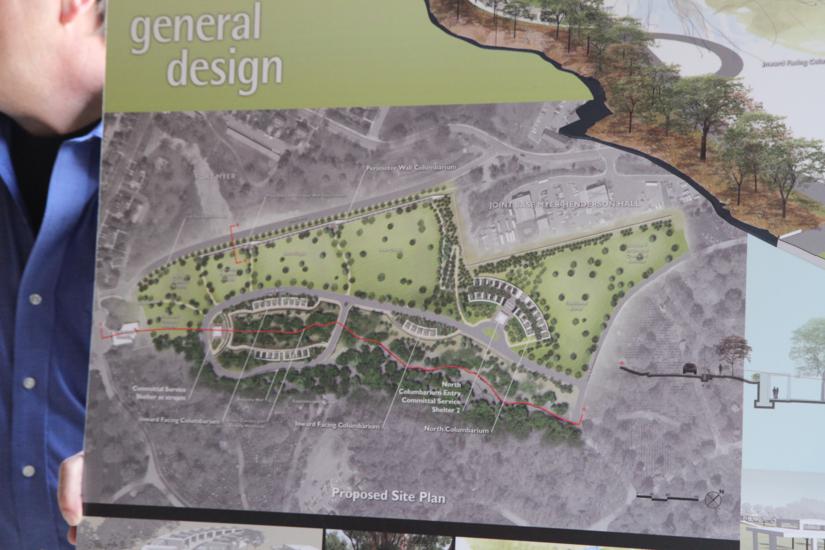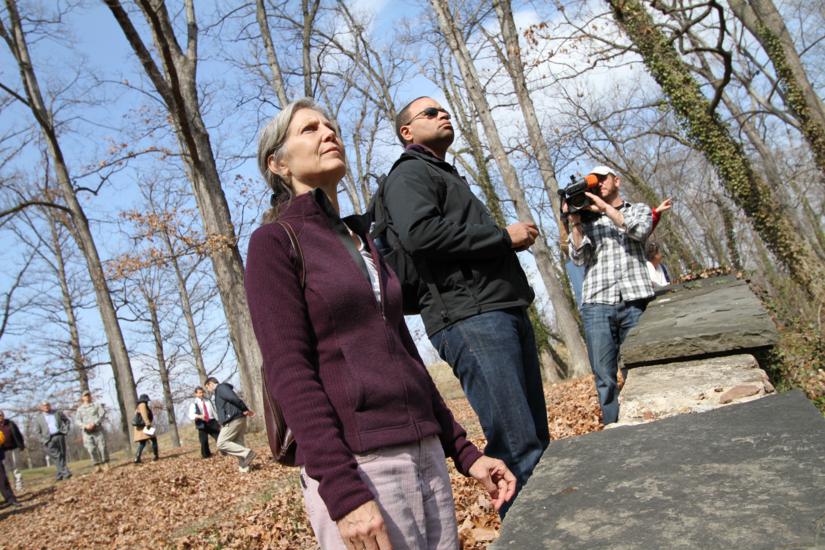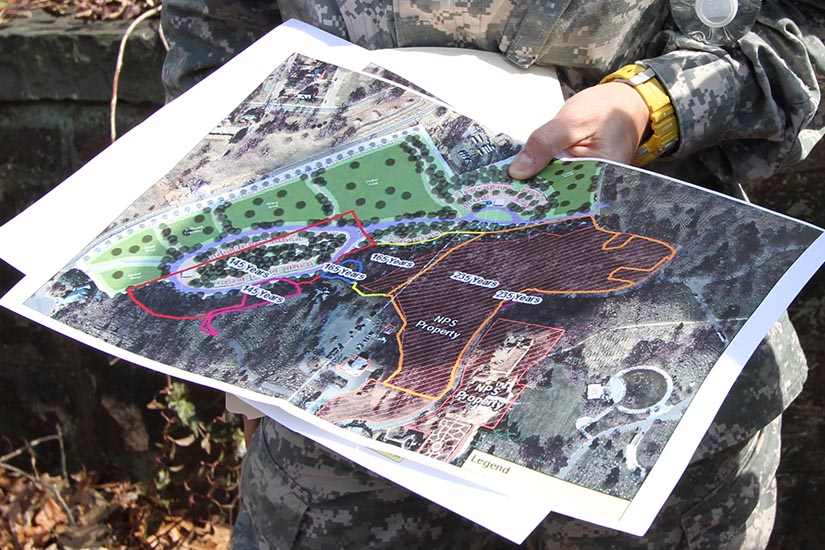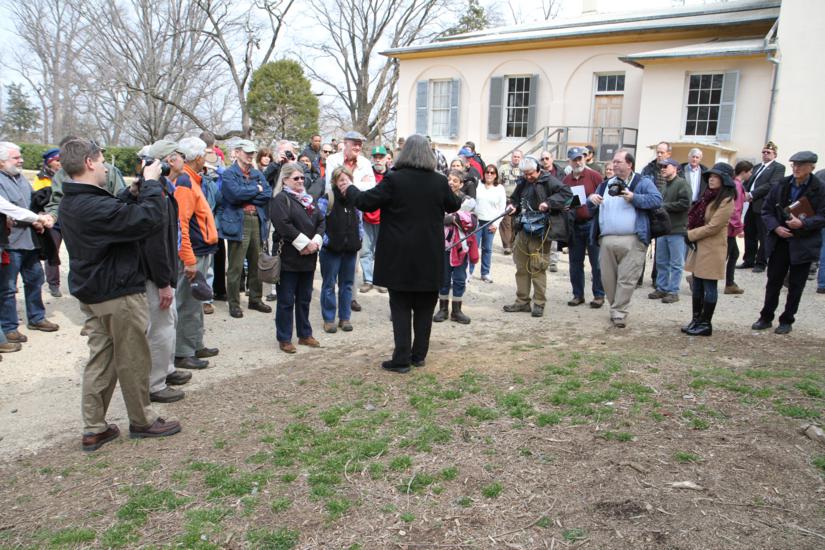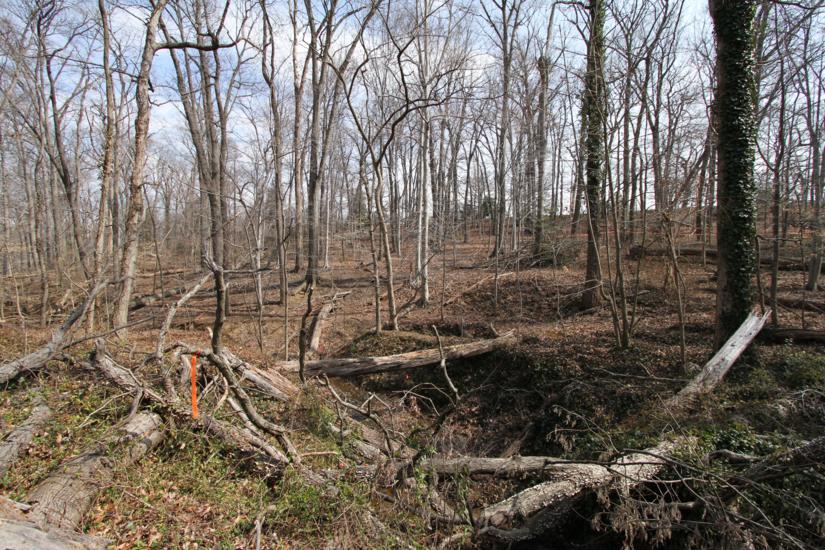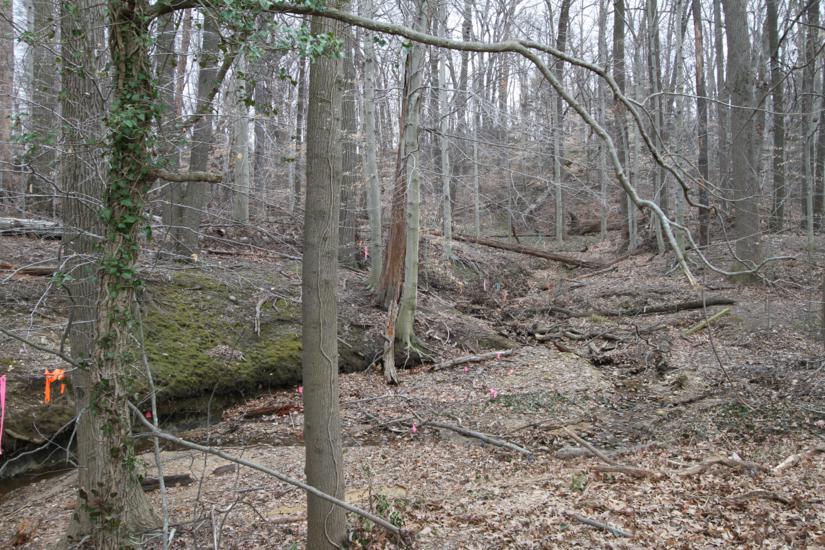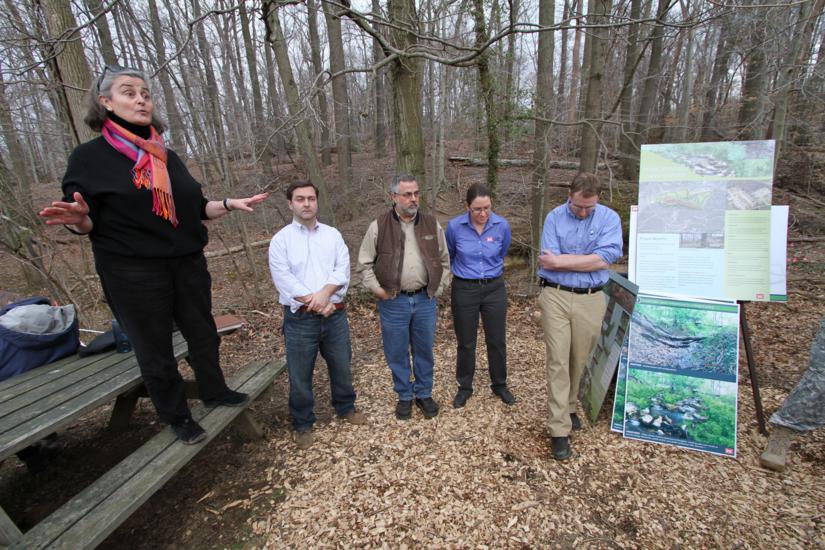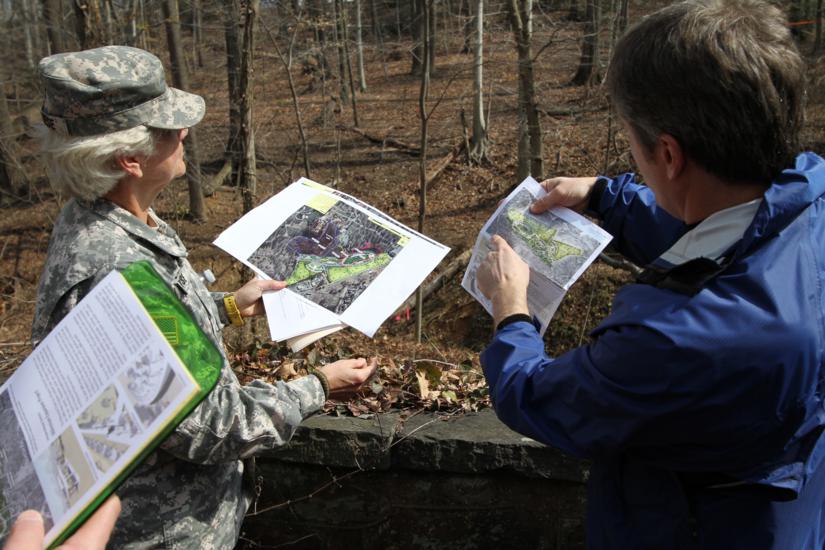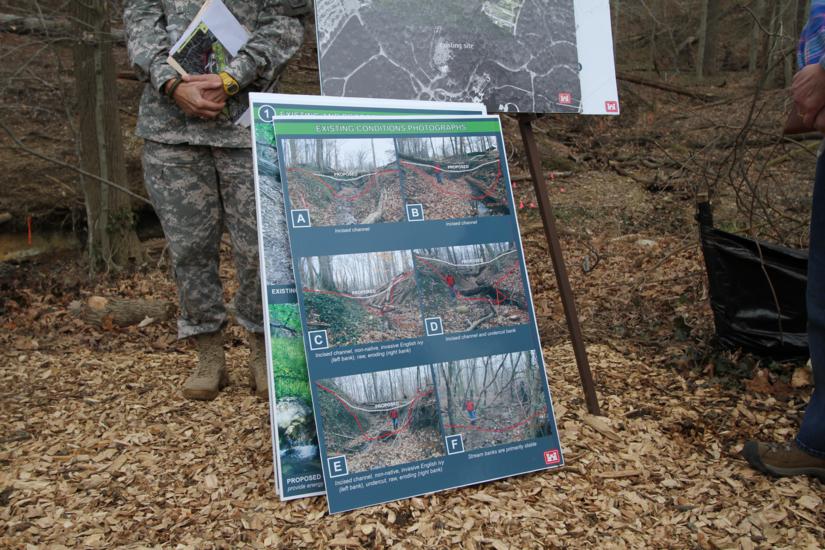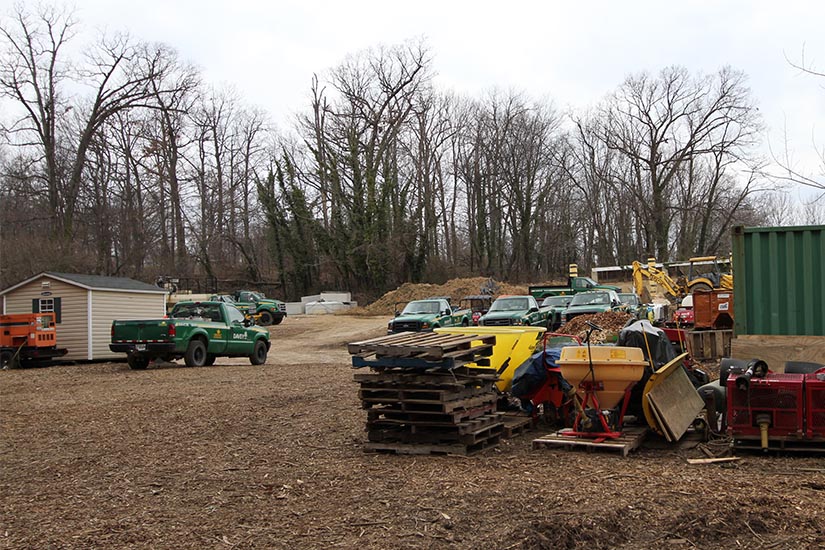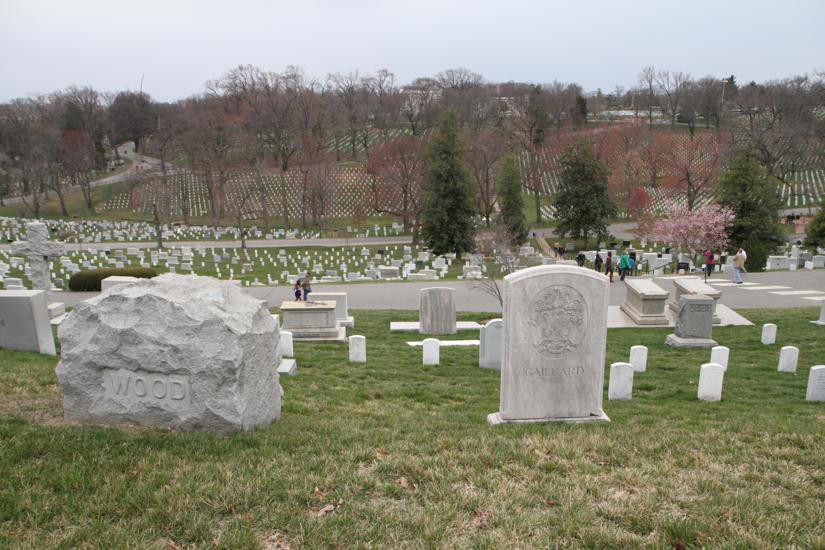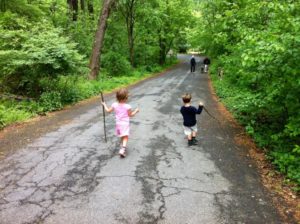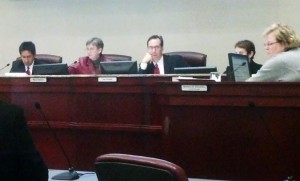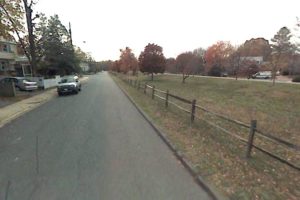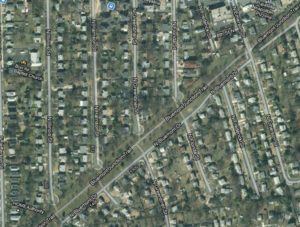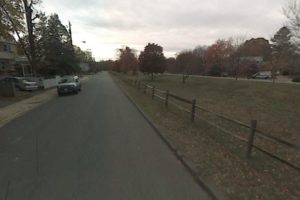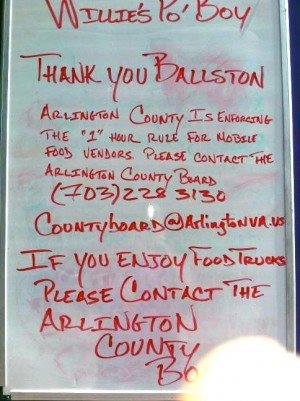Barring an act of Congress, a planned expansion of Arlington National Cemetery will move forward, despite the objections of some residents who say the plan will cut down too many trees and destroy a natural habitat.
Cemetery leaders and the Army Corps of Engineers, which designed the expansion plan, held an open house and site visit last Saturday to brief residents about the recently-updated plan, show them the site, and listen to their comments. The comments were mostly critical.
“There will be 800 trees taken down. That’s a really big loss for the community,” said one resident who declined to provide her name. “I think there would be lots of veterans who would like to be in a place where the birds are singing and creating nests.”
The Millennium Project, as the plan is called, will expand the cemetery’s burial space to a sloped parcel of undeveloped land adjacent to Fort Myer. The expansion is necessary, officials say, because the cemetery could run out of burial space within 12 years.
More than 700 native trees and nearly 70 dead and invasive trees will be removed, though the Cemetery plans to replant 600 trees as part of the project. Between in-ground burial spots and niche spaces in columbariums, the land is expected to provide a final resting place for up to 30,000 military veterans and their spouses.
Critics of the plan say that the loss of older, mature woodlands will have an outsized impact on the natural habitat, given that much of the rest of Arlington County is urbanized. Such older woodlands would take generations to replace, essentially making them “irreplaceable,” said critics, including members of several citizen groups like the Arlington Urban Forestry Commission.
Cemetery officials, however, say that the land was clearcut during the Civil War and that most of the trees are 50-100 years old, with the oldest at about 145 years old — not meeting the true definition of an “old growth” forest. Further, they say that clearing out the invasive species that have taken root in the current woodlands will provide a better environment in the long run, as the replanted trees grow and mature.
The plan presented last weekend was actually a more environmentally-sensitive revision of a cemetery expansion plan from 2006 that would have clearcut the land and filled in a stream that runs down the middle of it. Instead, the stream will be preserved, the trees adjacent to the stream will be saved, and a small grove of trees in the middle of the land will also be saved, for aesthetic purposes.
Critics of the plan said there are better options than cutting down a mature woodland. Options suggested included clearing invasive species and using the woodland as a place for loved ones to scatter ashes after cremation; converting one of the Pentagon’s parking lots into burial space; limiting expansion of the cemetery to the Navy Annex site; and accelerating the creation a new national military cemetery.
“Long term, you’re going to have to move off anyway and do this sort of thing elsewhere,” said Arlington resident and conservationist Mark Haynes. “Arlington has so little in terms of woods left… why take this now? Leave this here as part of the hallowed ground. You’ve got plans for the long term anyway, why not start them now?”


